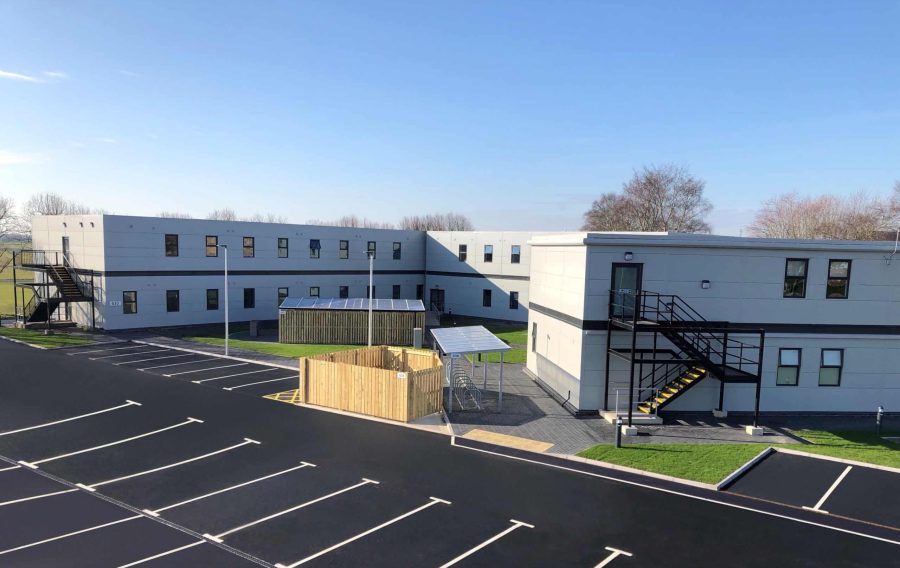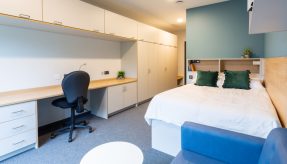
As part of the Ministry of Defence’s (MoD) Modernised Accommodation Offer (MAO), armed forces personnel are due to benefit from an upgrade to current Single Living Accommodation (SLA) arrangements. The change introduces a new minimum standard for SLA, which came into effect in March 2024, and is hoped to improve the MoD’s residential stock. The standard is a significant opportunity for the MoD to increase its reliance on sustainable, rental building solutions; both for the accommodation itself, and the on-site facilities required to construct new, permanent living quarters.
The wider aim of the MAO is to enhance accommodation entitlements and quality of facilities, provide more support for home ownership and upgrade the accommodation offer overseas. Some elements of the offer, such as the move to allocate accommodation based on need rather than rank, are yet to be rolled out as the MoD considers public challenges to the change.

Ian Astley
In contrast, the new standard for SLA has been widely welcomed as it provides a more concrete means of accurately measuring accommodation conditions; the same as is undertaken for service family accommodation (SFA) already. The standard aims to amend the previous sticking plaster approach to SLA maintenance and instead focus efforts on a preventative life cycle replacement programme to ensure higher value stock in the long term.
However, the MoD has several challenges to negotiate as it looks to invest in upgrading its accommodation. For example, new facilities must feed into the Government’s net zero targets and there is an additional need for flexibility to ensure accommodation is located where there is demand. Whilst the MoD has a surplus of SLA and SFA accommodation, it has been acknowledged that better use and planning of existing and future accommodation will maximise the system’s efficiency.
As such, there is an opportunity for rental building solutions to be implemented that work for the short- and long-term aims of this investment. When produced through modern methods of construction (MMC), such as offsite modular buildings, these solutions can be scaled up or down at pace to suit site requirements. Additionally, they meet sustainability targets as they can be reconfigured or repurposed for different uses after installation and completion. Such flexibility could allow SLA to be moved across the MoD estate to meet changes in accommodation demand across multiple locations. This would enable a more agile positioning of personnel, whilst reinforcing the MoD’s sustainable commitments by avoiding the construction of new buildings via traditional methods.
The logistical flexibility afforded by rental modular solutions is matched by the financial flexibility they provide. Long-term leases would allow facilities to be funded by operational expenditure (OpEx budgets), relieving pressure to purchase buildings outright using capital expenditure (CapEx budgets). This could be particularly valuable should a potential change in government stretch the defence budget further.
Perhaps more important, however, is the role rental modular solutions play to support the construction of permanent facilities. Whilst rental solutions remain largely unexplored by the MoD for SLA, they are invaluable for accommodating construction workers throughout large-scale projects. The construction of new permanent buildings requires welfare, office and living facilities to house construction personnel – facilities that decant rental solutions are ideal for. The scalability of these solutions will cater to fluctuations in worker numbers whilst their rapid installation times will ensure a smooth delivery of new and improved defence facilities.
Choosing offsite, factory-based manufacturing for rental buildings will also limit disruption to the live site, minimising the time spent escorting construction personnel to and from different areas. Equally, the precision manufacture used in offsite manufacturing naturally reduces the carbon emissions of the building process. Wasted materials and transportation emissions are minimised, naturally lowering the embodied carbon of the final product. To this end, permanent buildings produced through MMC also bring sustainability benefits for the MoD and offer a greener solution when upgrading long-term infrastructure.
Beyond supporting the construction or refurbishment of new SLA, applications of rental building solutions could also buoy larger MoD developments. This could include the construction of new mess facilities or a technical building that accommodates flight simulation equipment.
With the new minimum standard for SLA comes a quality benchmark the MoD must live up to. Tapping into the modular building solutions available could be the path to a more comfortable, sustainable and dependable future for armed forces personnel and their families.
Feature submitted by Ian Astley – regional director at offsite manufacturer, Premier Modular.







